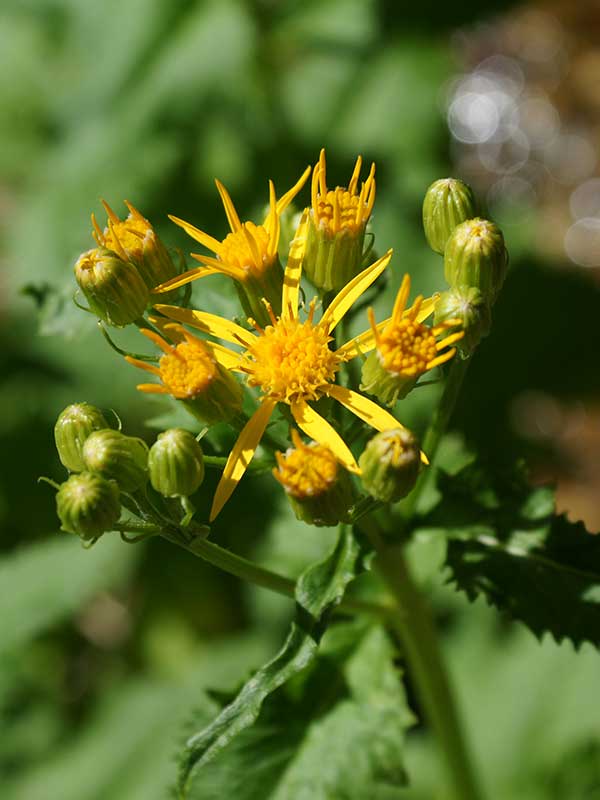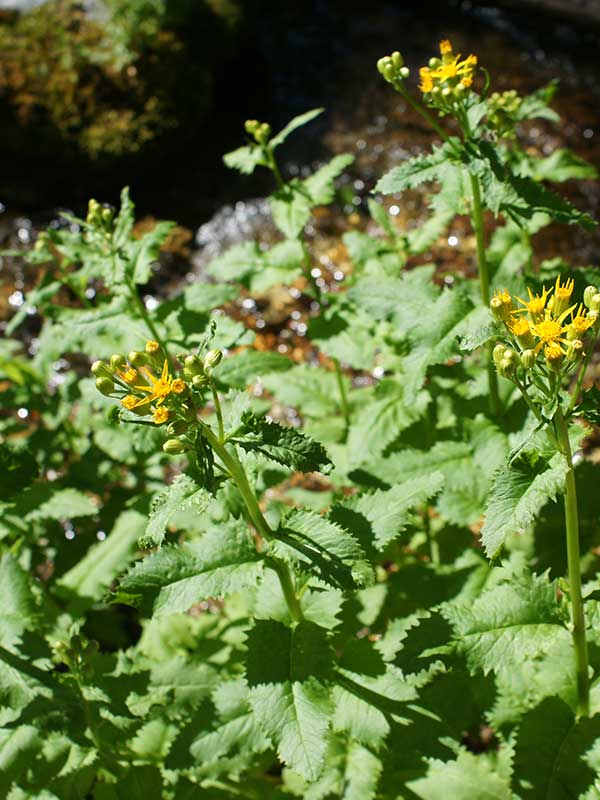Senecio triangularis / arrowleaf ragwort
- leafy stems with arrow-shaped, coarse-toothed leaves
- often in large patches on moist soil
- clusters of yellow flower heads, each with 8-ish untidy ray florets
- numerous green involucral bracts, sometimes with black tips
- largest leaves occur mid-stem
Also known as: arrowleaf groundsel, arrowleaf senecio, arrowleaf butterweed
Arrowleaf ragwort plants have narrow, serrated, arrow-shaped leaves as the name suggests. The leaves are regularly distributed along the stems. The leafy stems are topped with clusters of small, yellow composite flowers. Total plant height is highly variable, from about 4 inches to 4 feet.
The arrow leaf ragwort inflorescence typically contains between 10 and 30 flower heads. Each is a rather untidy looking thing with only 8-ish ray florets arranged around a central domed disk. Beneath the flower is an involucre with 13 (or sometimes 8 or 21) green bracts. The individual blossoms are 3-ish inches across.
Although that short description should pretty much pin the ID down, there are other bits that almost classify as interesting. In particular, the longest leaves are found around the middle of the stem. Lower leaves are smaller and have short petioles. The other leaves are apetiolate.
Arrowleaf ragwort is a perennial herb that grows from a branched caudex. The stems may appear singly, but usually form loose clumps. Expect them in open coniferous forests or on rocky stream sides… moist, but not usually too wet. The flowers appear in July to late summer.
| Color | |
|---|---|
| Family | |
| Blossom size | |
| Inflorescence size | |
| Inflorescence type | |
| When? | |
| Where? |


